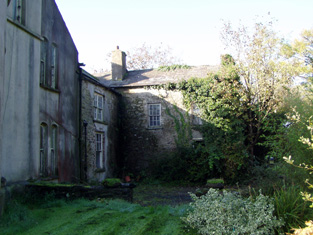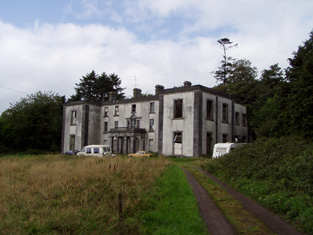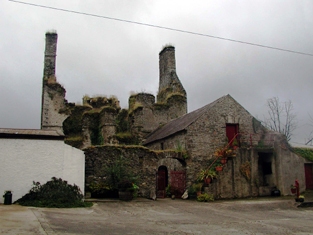Mocollop Castle
Houses within 5km of this house
Displaying 12 houses.
Houses within 5km of Mocollop Castle
Displaying 12 houses.
| House name | Description | |
|---|---|---|
| Moydilliga/Modeligo | In the mid 19th century this house was the home of Henry Braddell. It was valued at £16 and held by him in perpetuity. Wilson, writing in 1786, refers to it as the seat of Mr. Armstead. By 1906 the mansion house at Moydilliga was valued at £42 and occupied by Henry Braddell. In the early 20th century the property passed to the Haskins-Braddells. Sold by them in 1950, this house is still a family home. |

|
| Kilmurry | The house was built in the early 18th century and remained in the hands of the Grant family until sold to the Rosminian Order in the 1930s. In the 1940s the Irish Tourist Association surveyor was given to understand that the Grants still retained title to the property and were residing in South Africa. In the mid 19th century it was valued at £37 and held by Thomas St John Grant in fee. At the beginning of the 21st century this house was in a dilapidated state. |

|
| Marshtown/Marston | Home of Richard Henry Gumbleton in the early 19th century and at the time of Griffith's Valuation when the buildings were valued at £12. 10 shillings. Advertised for sale in June 1854. Hajba writes that the Orpens built a much large house on the demesne in the 1860s which was burnt some time later. In 1906 Basil Orpin occupied a house valued at £55 at Marshtown. Buildings still exist at this site. An earlier Marshtown House, previous home of the Gumbletons, was located over the border in county Waterford. | |
| Sun Lodge | Sun Lodge is marked on the first Ordnance Survey map and was occupied by Denis Hanan in the mid 19th century and held from Henry Peard. It was valued at £30+. Hanan's interest was advertised for sale in 1870. Hajba records various other occupants and this house is still occupied and well maintained. |

|
| Waterpark | Originally a Pyne residence which later passed through marriage to the Cavendishes. In 1786 Wlson refers to "the ruins of Water Park, the seat of the late Lord Chief Justice Pine". Hajba writes that other occupants were the Watkins and Drew families. There was no house of more than £2.10 shillings valuation in this townland, held by George Walker, at the time of Griffith's Valuation. | |
| Bride Park | Hajba writes that the Reverend Stephen Rolleston built this house in the 1770s. In 1814 it was inhabited by the Reverend Spread and in the mid 19th century by Thomas Power who held it from Mrs Elina Greaves and others. The buildings were valued at £20+. Bride Park remained the home of the Power family until the early 20th century. This house has recently been renovated and restored. |

|
| Ballygally House | Ballygally House was the property of Nelson T. Foley in 1851 when it was vacant and valued at £27 10s. In 1837 Lewis refers to it as "the occasional residence of G. Holmes Jackson". It is still extant and occupied. |

|
| Elgin Cottage | In 1851 this property was leased by Georgiana Gumbleton to Edmund Barry when it was valued at £10. It was built after the 1st edition Ordnance map and is labelled Elgin Cottage on the 25-inch edition of the 1890s. There is still an extant house at the site. | |
| Marshtown House | Held in fee by R.H. Gumbleton at the time of Griffith's Valuation, when it was valued at £8 10s. The property is labelled Marshtown House on the 1st editon Ordnance Map but is not labelled on the later 25-inch edition. Marston House (W950987), in the adjacent townland of Marshtown, is shown on the 25-inch map of the 1890s but there is no trace remaining. | |
| Cloonbeg | A property described as offices, the property of R.H. Gumbleton, was valued at £15 5s at the time of Griffith's Valuation. In 1906 this property was owned by Basil Orpin with a valuation of £16. Some of the buildings still remain at the site. | |
| Ballyduff Castle Farm | Described as Ballyduff Castle (in ruins) on the 1st edition Ordnance Survey map, these buildings were valued at £11 15s at the time of Griffith's Valuation. They were being leased by Edward Walsh from the Musgrave estate. The National Inventory of Architectural Heritage suggests the house was built c.1825. The ruined fortified house at the site dates from the early seventeenth century. |

|
| Glenbeg House (Lismore) | In 1851 Glenbeg House was owned by Thomas Foley but was vacant. It was valued at £23 10s at that time. In 1837 Lewis refers to it as the seat of G. Bennett Jackson. The original house dates from the mid-sveenteenth century though it was renovated in the nineteenth and twentieth centuries. Smith, writing in 1774, refers to it as the seat of Mr. John Jackson. Sadleir, referring to Rowland Jackson in 1775, notes that he was "of Glanbeg". Brady notes that the Jacksons were employed by the first Earl of Cork in the early seventeenth century. Described as "an ordinary farmhouse" in the ITA Survey in 1942. It is still extant and occupied. |

|

